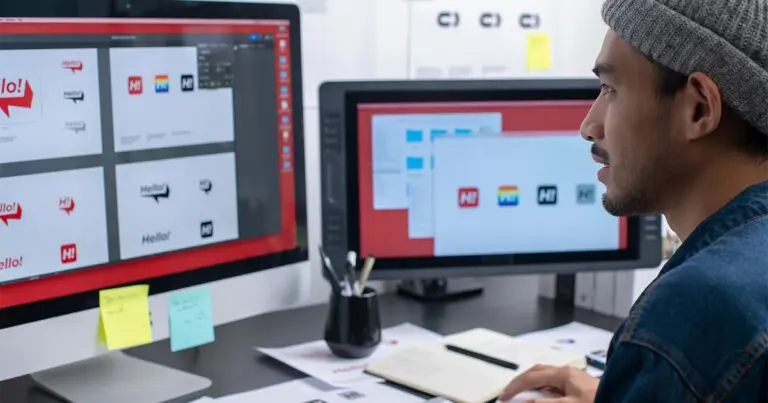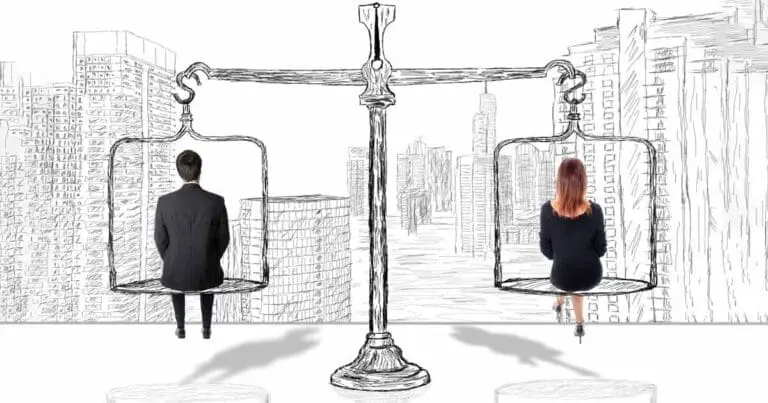10 Types of Graphic Design: Why Specialization Matters

It’s a common misconception: when people hear “graphic designer,” they often imagine a one-size-fits-all role.
In reality, the graphic design industry is vast, with multiple disciplines requiring different creative skills and expertise.
In fact, the Bureau of Labor Statistics highlights how specialized roles in graphic design and visual communications are growing, driven by the need for meaningful designs across digital and physical spaces.
Like any profession, graphic design contains many distinct specialties — and understanding the differences can lead to better team dynamics and project outcomes.
Why Specialization in Graphic Design Matters
Different types of projects demand different graphic design skills.
For example, a designer skilled in user experience design for app design may not excel at creating print materials like brochures or magazines.
Specialized graphic designers bring deeper expertise, ensuring key elements like color palettes, typography, and layouts fit the unique project goals.
On the flip side, hiring the wrong type of designer can result in wasted time, diluted quality, and missed opportunities for strong visual impact.
Common Types of Graphic Designers (and What They Do Best)
- Brand Identity Designers
- Marketing Designers
- UI/UX Designers
- Web Designers
- Motion Graphics Designers
- Packaging Designers
- Print Designers
- Graphic Illustrators
- Environmental Designers
- Infographic Designers
1. Brand Identity Designers
An identity designer focuses on creating a company’s visual identity, including logos, color schemes, and typography systems.
They craft cohesive branding assets like brand guides, ensuring consistency across all marketing materials and touchpoints.
2. Marketing Designers
A marketing designer specializes in creating promotional materials, ads, and advertising design assets that drive engagement.
From social media visuals to email campaigns, they ensure the design elements capture attention while aligning with business goals.
3. UI/UX Designers
UI/UX designers build intuitive user interfaces and elevate user experience for digital products like websites, apps, and software.
Their work is crucial in making digital spaces accessible, engaging, and aligned with best graphic design principles.
4. Web Designers
Web designers focus on the front-end visual design of websites, often using tools like Adobe Photoshop or Adobe Illustrator.
They prioritize visual elements and sometimes incorporate basic coding to ensure the site’s aesthetics and functionality align.
5. Motion Graphics Designers
A motion graphics designer creates dynamic assets like animated videos, music videos, explainer clips, and video games intros.
Their mastery of movement and timing transforms static graphics into compelling digital storytelling tools.
6. Packaging Designers
A packaging designer develops the visual and structural design for physical products like boxes, labels, and unboxing experiences.
This type of design must balance industrial design principles with aesthetics to create memorable product interactions.
7. Print Designers
Print designers specialize in tangible media such as business cards, brochures, signage, and magazines.
Their deep understanding of print materials and color palettes ensures high-quality results that make a lasting impression.
8. Graphic Illustrators
Graphic artists skilled in illustration create custom artwork for branding, editorial projects, t-shirt designs, and more.
Their unique style adds personality and emotional resonance to a brand’s visual story.
9. Environmental Designers
Environmental designers focus on designing physical spaces like event venues, exhibits, or office branding.
They merge corporate design and visual communications to transform spaces into immersive brand experiences.
10. Infographic Designers
Infographic designers specialize in visual communications by translating complex data into easy-to-digest visuals.
They apply graphic design principles and a solid understanding of design elements to tell clear, compelling stories through graphics.
How to Choose the Right Designer for Your Project
To choose the right designer for your project, define the project’s goal, determine the designer’s skills and experience, consider relevance, not just aesthetics, and be realistic.
Define the Project’s Goal
Start by clearly defining the project’s goal—whether it’s launching a brand, improving user experience, or designing a product label.
Knowing the outcome helps align with the right specialty, from a Product designer to a Motion graphics designer.
Determine the Designer’s Skills and Expertise
When sourcing a designer, assess their background and previous work.
Ask specifically about their graphic design career focus, whether it leans toward packaging design, publication design, or theme design for digital platforms.
Consider Relevance, Not Just Aesthetics
While a portfolio’s look matters, relevance is critical. Look for advertising designers if you need strong ad campaigns, or a digital publication expert for e-books and online content.
Prioritize project alignment over surface-level style.
Be Realistic
Understand that specialization matters.
A web designer might attempt a logo, but an experienced identity designer will bring a refined approach to crafting a visual identity.
Set realistic expectations to get the best results.
Why One Designer Can’t (and Shouldn’t) Do It All
One designer cannot and should not do it all because specialist and generalists are not created equal, there is a higher risk of spreading skills too thin, and specialists have the expertise to collaborate.
Specialists and Generalists Are Not Created Equal
Much like in healthcare, a general practitioner isn’t a replacement for a heart surgeon.
Similarly, specialists in graphic design types—whether motion designers, publication designers, or others—bring a depth of expertise critical for project success.
Higher Risk of Spreading Skills Too Thin
A designer trying to cover every specialty risks surface-level execution.
Mastering graphic design principles takes years of honing specific areas, from visual communications to advanced digital assets production.
Specialists Have the Expertise to Collaborate
Strong designers know their strengths and collaborate when needed.
A creative director or art director often oversees this collaboration, ensuring specialists like print designers and marketing designers work in harmony.
Specialists Lead to Better and Faster Results
Recognizing the diversity of graphic design skills shows respect for the craft and leads to better creative outcomes.
Choosing specialists results in faster turnaround, stronger brand resonance, and more effective visual impact.
The Types of Graphic Design You Need to Know
Understanding the 10 types of graphic designers—from marketing designers to environmental designers—empowers smarter hiring decisions.
Matching a designer’s strengths to your needs leads to stronger, more meaningful designs.
In the evolving graphic design industry, specialization isn’t a limitation; it’s a powerful advantage that elevates both process and results.
Looking to hire top-tier Tech, Digital Marketing, or Creative Talent? We can help.
Every year, Mondo helps to fill thousands of open positions nationwide.
More Reading…
- Why Chasing the Top 1% of Talent Is Holding You Back
- What’s the Difference Between Being a Boss vs. Being a Leader?
- Why Networking Is the Best Way to Land Your Next Job: Success Stories
- Greener Intelligence: How Companies Can Implement AI Sustainably
- What Job Seekers Wish Employers Knew (But Won’t Tell You)
- The Peter Principle: Definition, Tips & Strategies for Better Business Outcomes
- AI Ethics Specialists: The Unsung Heroes of Responsible Innovation
- Beyond the Paycheck: What Today’s Top Talent Really Wants
- Financial Literacy Month: Budgeting for Talent Acquisition
- Internal Hiring vs. External Hiring: Cost-Benefit Analysis
- Staffing Agency ROI: How the Right Partner Saves Time, Money, & Headaches
- Best Practices for Seasonal Hiring During the Summer Slowdown



